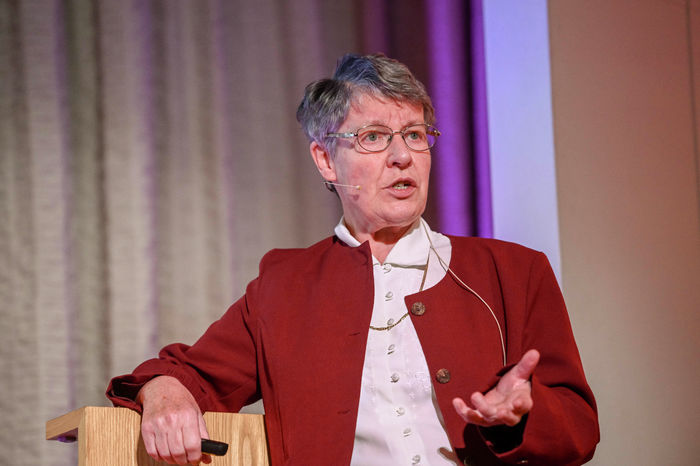Investigating the gender divide in STEM
Teymour Taj discusses what’s behind the STEM gender gap and what can be done

The gender divide in science subjects is a pernicious issue that has been immune to the test of time. The glaring underrepresentation of women in my field is clear in my lectures and practicals. The simple presence of a ‘woman in STEM’ has become a pop culture phenomenon within universities, describing a trailblazer who shatters gender norms.
However, this path has been trodden before by many women forgotten by history: take Rosalind Franklin, whose picture of DNA was critical to the discovery of its structure, but was denied the Nobel Prize. Today, we have inspirational scientists like Jennifer Doudna, who pioneered the gene-editing technology CRISPR, and Katalin Karikó, behind the mRNA vaccines so crucial in ending the Covid pandemic. Despite this progress, the cohort of students taking STEM degrees skews heavily towards men, and many barriers still exist preventing women from entering the field.
“This path has been trodden before by many women forgotten by history”
In 2022, only 39.6% of students admitted to Cambridge for STEM subjects were female, compared to 63.2% of humanities entrants. Female representation also varied widely within STEM: 80.1% of computer scientists and 80.6% of mathematicians were male, while Natural Sciences had the best female representation. While this gap has decreased over the past decades, this process has occurred at a glacial pace. What are the reasons behind the divide, and why has it been so slow to change?
In an interview with Cambridge University Gender Studies Society, Dame Athene Donald, a prominent physicist and Master of Churchill College, gave her thoughts on the divide and identified the main culprit – sexism. Reinforced by the disproportionately small presence of women in the field, there is a common perception of physics as being a ‘boys’ subject’. Dame Donald posits that, having gone to a girls school, she was insulated from this view and that made her more likely to pursue the subject. The statistics bear this out – according to the Institute of Physics, girls are almost 2.5 times more likely to choose A-Level Physics if they attend a single-sex school, suggesting that the underrepresentation is due to cultural factors rather than any difference in ability.
“The participation of women is critical to science”
Dame Donald suggested that students internalise how they are treated by their teachers – teachers educated within the context of a male-dominated STEM field may be more supportive of their male students and pay greater attention to them, leading to lower uptake of these subjects among female students. She raises the point that this differing treatment of boys and girls extends to the earliest stages of development: girls are given dolls to play with while boys are given Lego sets, pushing boys towards hands-on, technical fields while girls are driven towards caregiving roles.
You might be wondering, is change afoot? According to the UK Government, the proportion of women entering undergraduate STEM courses has increased from 33.6% to 41.4% between 2011 and 2020. However, other statistics imply that the gap is actually widening: in 2023, 22.1% of boys achieved grades 7-9 in GCSE maths compared to only 20.2% of girls, the largest difference since 2016.
In order to tackle this divide, many solutions have been proposed, such as dedicated fellowships for female scientists to increase the presence of women in academia. However, I believe that this is a cultural issue which must be tackled from the root. We should do away with traditional gender norms and encourage girls to explore technical skills from a young age. Teachers of STEM subjects should be made aware of unconscious bias against female students, and instil a positive growth mindset in their students that persevering with science will reap rewards. The recruitment of female science teachers must be emphasised, as the positive influence of role models is most immediate when they are present in the classroom. The participation of women is critical to science, and if we have the will to put cultural norms well beyond their sell-by date behind us, we can create a field strengthened by inclusivity, diversity and cooperation.
 News / Downing investigates ‘mysterious’ underground burial vault 29 December 2025
News / Downing investigates ‘mysterious’ underground burial vault 29 December 2025 Interviews / You don’t need to peak at Cambridge, says Robin Harding31 December 2025
Interviews / You don’t need to peak at Cambridge, says Robin Harding31 December 2025 News / Unions protest handling of redundancies at Epidemiology Unit30 December 2025
News / Unions protest handling of redundancies at Epidemiology Unit30 December 2025 Lifestyle / Ask Auntie Alice29 December 2025
Lifestyle / Ask Auntie Alice29 December 2025 Features / ‘Treated like we’re incompetent’: ents officers on college micromanagement30 December 2025
Features / ‘Treated like we’re incompetent’: ents officers on college micromanagement30 December 2025









